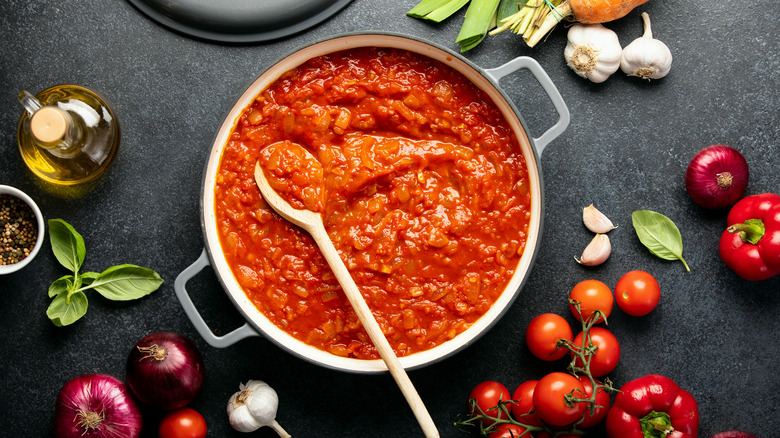Add A Bright Burst Of Flavor To Tomato Sauce With One Easy Ingredient
While tomato is usually the only ingredient you can see in a tomato sauce, it isn't the only one you can taste. In addition to tomato, you can usually detect the onion and garlic. And depending on the recipe, you should also be able to pick up on herbs, such as oregano and basil. A well-made tomato sauce should have a good balance of these flavors. But sometimes, it can turn out bland. And if it's brightness you want to add, fennel is the ingredient you should go with.
Bland tomato sauce is typically caused by under-seasoning. But it can also occur if you don't use one of the tomato varieties that are ideal for tomato sauce. The good news is, there are plenty of ingredients that can come to the rescue. Adding a pinch of sugar, some butter, or parmesan cheese are common ways to go about it, and you can even mix in tomato paste to boost the tomato flavor.
Adding fennel to tomato sauce
When you add fennel to tomato sauce, you'll be able to taste a significant difference. Fennel's flavor can best be described as similar to that of licorice, though it's a bit more complex. It has similarities to onions, as well as the stem of bok choy in both taste and texture. And it has a sweetness that becomes more prominent when you cook it. Notes of citrus come through if you cook with the green part of the vegetable, also called the frond.
Fennel's distinct yet mild flavor is the main reason it's so effective at livening up a tomato sauce without overpowering the classic taste. However, fennel also functions as a flavor enhancer. Foods that share flavor compounds are naturally complementary, and fennel and tomatoes both contain sugar. This shared sweetness makes them taste good together. Adding fennel into tomato sauce is a great way to use that compatibility to your advantage.
The best form of fennel to add to tomato sauce
Any part of the fennel plant can effectively enhance the flavor of tomato sauce, but the amount you should use and when you should add it will vary. If you plan to use the citrusy fronds, treat them as you would fresh herbs, such as basil or oregano.
Fresh herbs are typically added towards the end of the cooking process, so do the same for fennel fronds. When using the bulb or stalk on the other hand, you'll want to instead add it at the beginning so it has enough time to tenderize. Rachael Ray recommends using two chopped bulbs of fennel for every can of tomatoes.
For a more pronounced fennel flavor, Ina Garten suggests using whole fennel seeds. "When you chop up whole fennel seed you get all of those essential oils in it," she explained on an episode of "Barefoot Contessa." When using fennel seeds, rather than the fresh vegetable, you only need a teaspoon per can of tomatoes, and you can add them along with any other dry herbs and spices. After your tomato sauce is done cooking — whether you used the seeds, fronds, or bulbs — it'll be packed with flavor.


